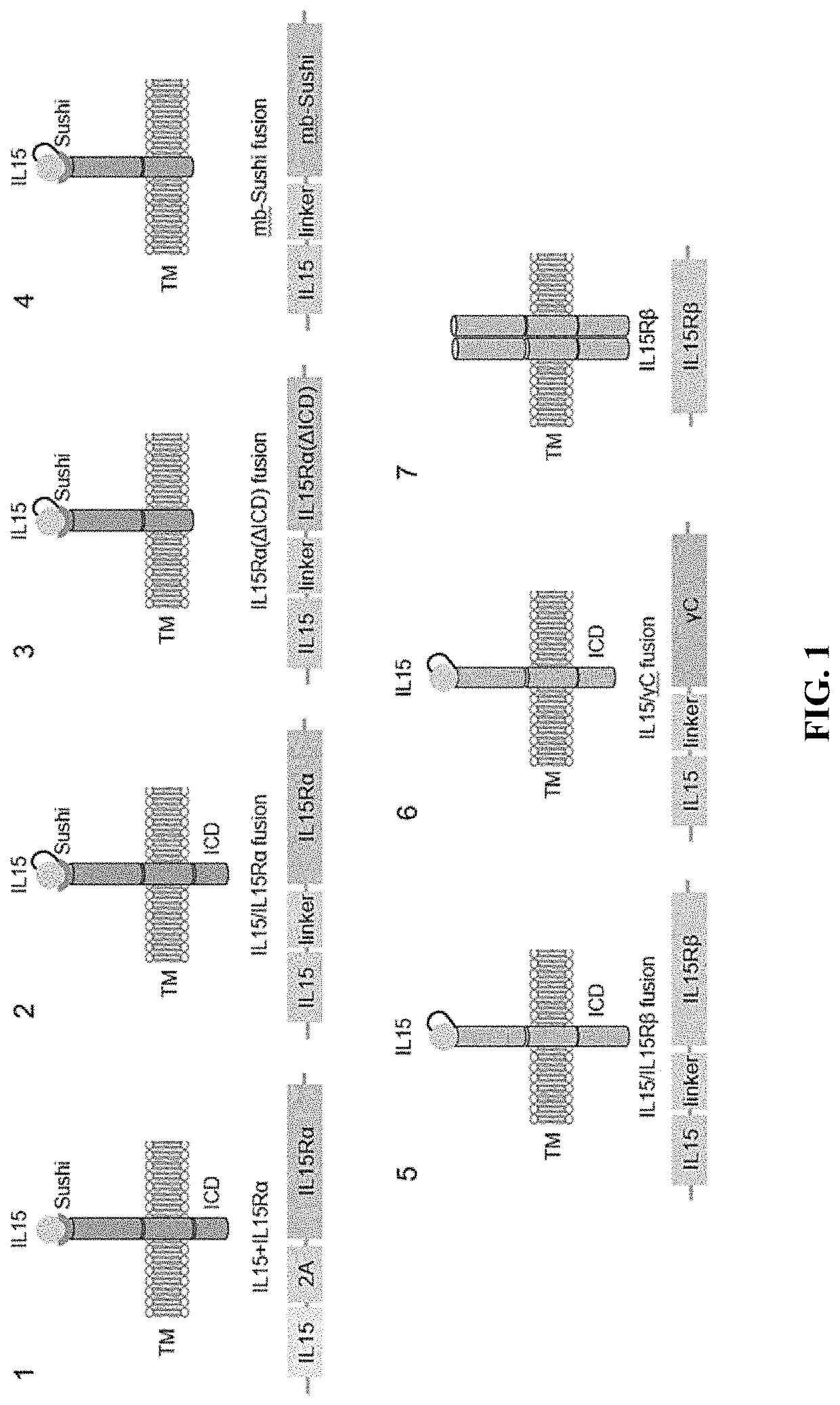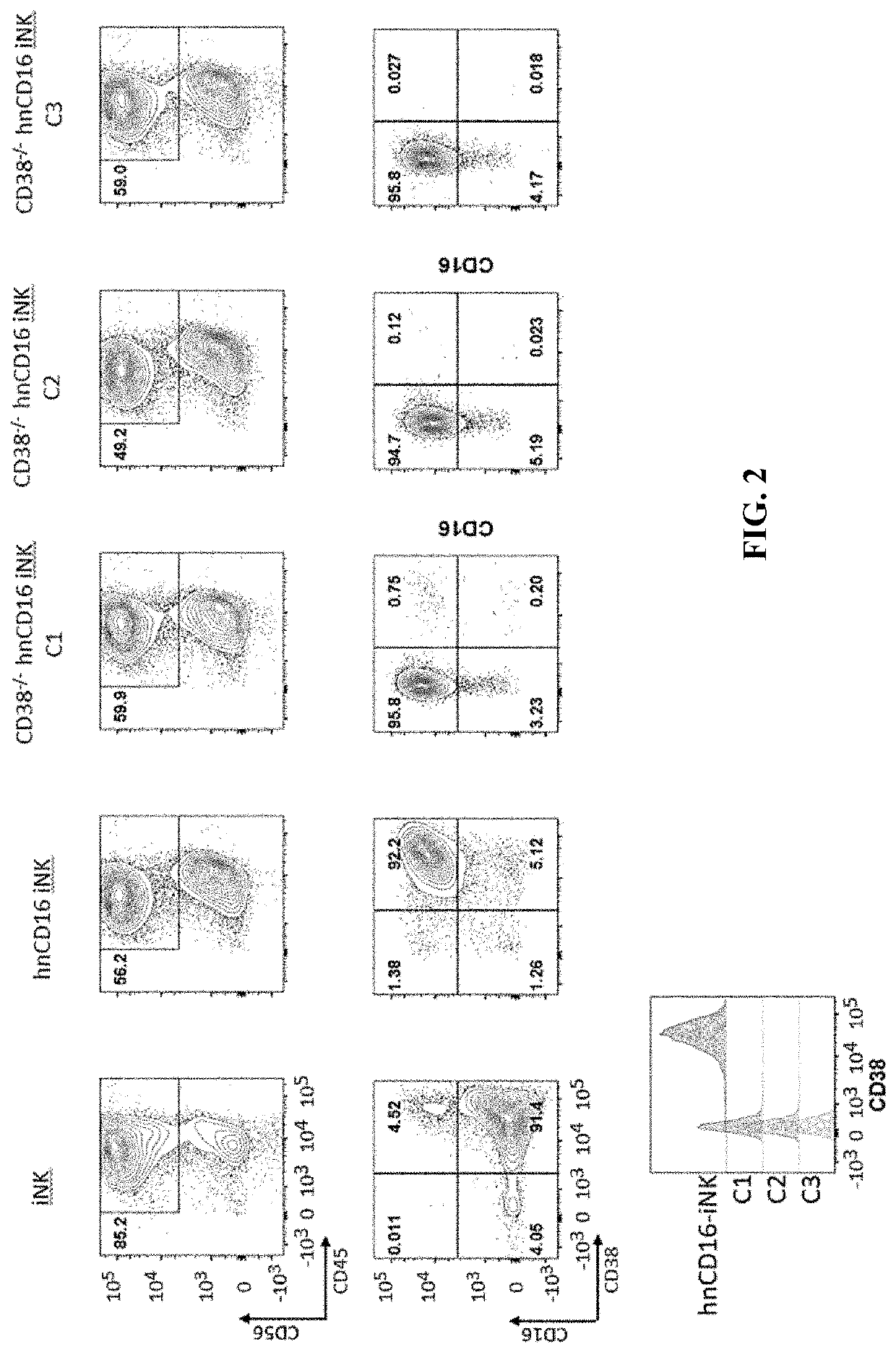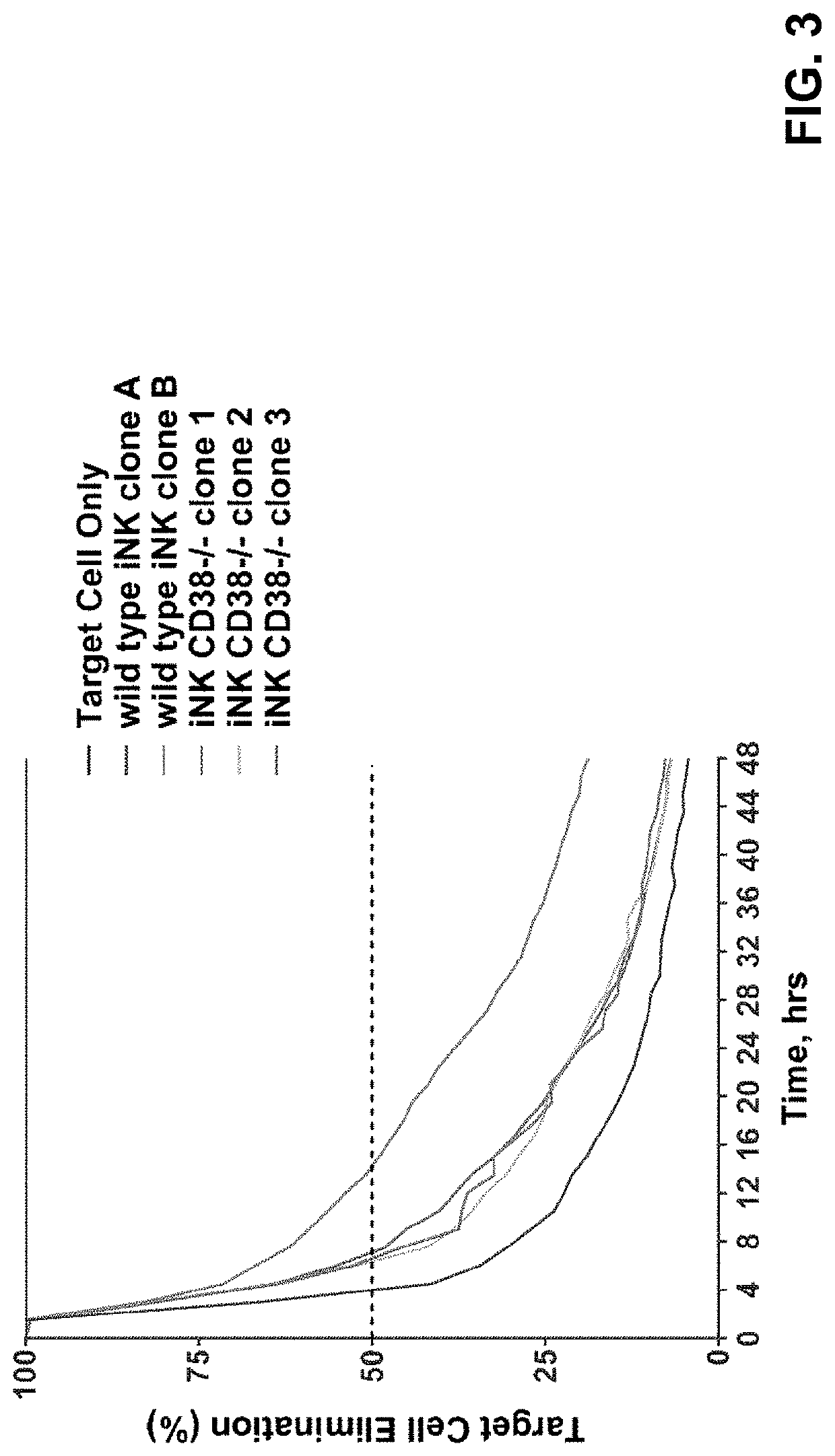Enhanced immune effector cells and use thereof
a technology of immune effector cells and effector cells, which is applied in the field of enhanced immune effector cells, can solve the problems of poor cell persistence, low cell expansion, and high cell death, and achieve the effects of reducing anti-cd38 antibody induced effector cell reduction, and improving anti-cd38 antibody treatmen
- Summary
- Abstract
- Description
- Claims
- Application Information
AI Technical Summary
Benefits of technology
Problems solved by technology
Method used
Image
Examples
example 1
Materials and Methods
[0277]To effectively select and test suicide systems under the control of various promoters in combination with different safe harbor loci integration strategies, a proprietary hiPSC platform of the applicant was used, which enables single cell passaging and high-throughput, 96-well plate-based flow cytometry sorting, to allow for the derivation of clonal hiPSCs with single or multiple genetic modulations.
[0278]hiPSC Maintenance in Small Molecule Culture: hiPSCs were routinely passaged as single cells once confluency of the culture reached 75%-90%. For single-cell dissociation, hiPSCs were washed once with PBS (Mediatech) and treated with Accutase (Millipore) for 3-5 min at 37° C. followed with pipetting to ensure single-cell dissociation. The single-cell suspension was then mixed in equal volume with conventional medium, centrifuged at 225×g for 4 min, resuspended in FMM, and plated on Matrigel-coated surface. Passages were typically 1:6-1:8, transferred tissue...
example 2
CD38 Knockout in iPSC Using CRISPR / Cas9-Mediated Genome Editing
[0281]Alt-R® S.p. Cas9 D10ANickase 3NLS, 100 μg is and Alt-R® CRISPR-Cas9 tracrRNA were purchased at IDT (Coralville, Iowa) and used for iPSC targeted editing. To conduct bi-allelic knockout of CD38 in iPSC using Cas9 nickase, the screened and identified targeting sequence pairs (1A and 1B, 2A and 2B, 3A and 3B) for gNA (i.e., gD / RNA or guiding polynucleotide) design are listed in Table 3:
TABLE 3Targeting sequence specific to CD38 locus forCRISPR / Cas9 genomic editing:SEQExon / TargetingCleavageIDChr#SequencePAMsiteNO:CD38-1 / 4TTGACGCATCGCGCCCGG15,778,6041gNA-1AAGGACD38-1 / 4ATTCATCCTGAGATGGGG15,778,6462gNA-1BAGGTCD38-1 / 4ACTGACGCCAAGACATGG15,778,4853gNA-2AGAGTCD38-1 / 4CTGGTCCTGATCCTCTGG15,778,5204gNA-2BGTCGCD38-1 / 4TCCTAGAGAGCCGGCGGG15,778,4595gNA-3AAGCACD38-1 / 4GGAGAGCCCAACTCTTGG15,778,4886gNA-3BGTCT
[0282]The genomically engineered iPSCs were subsequently characterized, and the bi-allelic CD38 knockout was confirmed.
example 3
Validation of CD38− / − iPSC and Derivative Cells
[0283]CD38 is known to express at specific cell stages and plays key roles in effector cells. During hematopoiesis, CD38 is expressed on CD34+ stem cells and lineage-committed progenitors of lymphoid, erythroid, and myeloid, and also during the final stages of maturation of effector cells such as, T cells and NK cells. Therefore, it was unknown and there was a concern, prior to the present application, whether iPSCs comprising CD38 knockout would develop properly when subjected to directed differentiation conditions and whether the generated effector cells would be functional, considering CD38 expression profile and functionality. The CD38 null iPSC comprising a bi-allelic knockout of CD38 surprisingly maintained its ability to differentiate into derivative cells. In one of the illustrations, three engineered iPSC clones genetically edited to have bi-allelic disruption of the CD38 gene and hnCD16 were differentiated to derivative NK cel...
PUM
| Property | Measurement | Unit |
|---|---|---|
| period of time | aaaaa | aaaaa |
| concentration | aaaaa | aaaaa |
| concentration | aaaaa | aaaaa |
Abstract
Description
Claims
Application Information
 Login to View More
Login to View More - R&D
- Intellectual Property
- Life Sciences
- Materials
- Tech Scout
- Unparalleled Data Quality
- Higher Quality Content
- 60% Fewer Hallucinations
Browse by: Latest US Patents, China's latest patents, Technical Efficacy Thesaurus, Application Domain, Technology Topic, Popular Technical Reports.
© 2025 PatSnap. All rights reserved.Legal|Privacy policy|Modern Slavery Act Transparency Statement|Sitemap|About US| Contact US: help@patsnap.com



